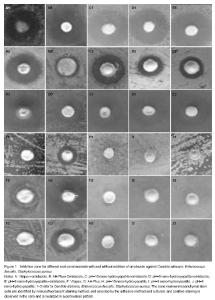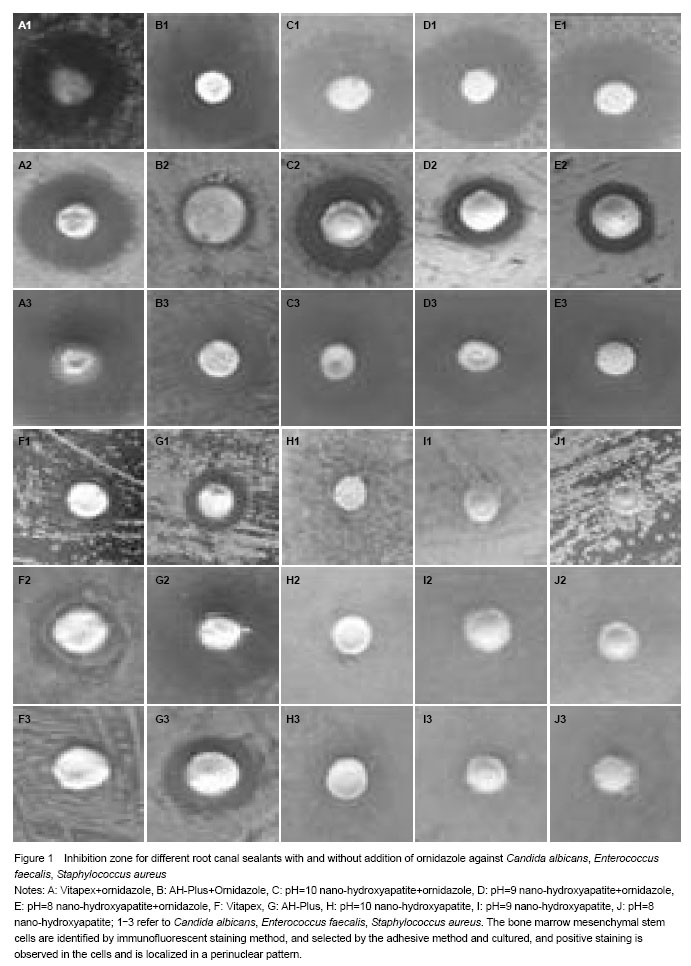| [1]Poursamara SA, Rabieea M, Samadikuchaksaraeib A, et al. Influence of the value of the pH on the preparation of nano hydroxyapatite-poly vinyl alcohol composites. J Ceram Process Res. 2009;10(5):679-682.
[2]Asgary S, Kamrani FA. Antibacterial effects of five different root canal sealing materia. J Oral Sci. 2008;50(4):469-474.
[3]Widowati W, Naing L, Ema M, et al. Sealing ability of hydroxyapatite as a root canal sealer: in vitro study. MJMS. 2007;40(3):101-105.
[4]Cobankara FK, Altinöz HC, Ergani O, et al. In vitro antibacterial activities of rootcanal sealers by using two different methods. J Endod. 2004;30:57-60.
[5]Sipert CR, Hussne RP, Nishiyama CK, et al. In vitro antimicrobial activity of Fill Canal, Sealapex, Mineral Trioxide Aggregate, Portland cement and EndoRez. Int Endod J. 2005;38:539-543.
[6]Siqueira JF Jr, Favieri A, Gahyva SM, et al. Antimicrobial activity and ?ow rate of newer and established root canal sealers. J Endod. 2000;26:274-277.
[7]Heling I, Chandler NP. The antimicrobial effect within dentinal tubules of four root canal sealers. J Endod. 1996; 22: 257-259.
[8]Cobankara FK, Altinoz HC, Ergani O, et al. In vitro antibacterial activities of root-canal sealers by using two different methods. J Endod. 2004;30:57-60.
[9]Zhang H, Shen Y, Ruse ND, et al. Antibacterial activity of endodontic sealers by modified direct contact test against Enterococcus faecalis. J Endod. 2009;35(7):1051-1055.
[10]Ma XD. The observation of short term effect of spherical 20 nm hydroxyapatite root canal filling materials. Kouqiang Yixue. 2010;30(2):121-122.
[11]Ma XD, Wang JP. Basic research of nano hydroxyapatite (nHA) root canal filling materials. Xinan Junyi. 2009;11(3):485-487.
[12]Du C, Cui Fz, Zhang W, et al. Formation of calcium phosphate/collagen composites through mineralization of collagen matrix. J Biomed Mater Res. 2000;50(4):518-527.
[13]Du C, Cui Fz, Feng QL, et al. Tissue response to nano-hydroxyapatite/collagen composite implants in marrow cavity. J Biomed Mater Res. 1998;42:540-548.
[14]Wesselink P. Root filling techniques. In: Bergenholtz. G, Bindslev PH, Reit Claes, eds. Text Book of Endodontology. Oxford: Blackwell Publishing Company, 2003:286-290.
[15]Timpawat S, Amornchat C, Trisuwan WR. Bacterial coronal leakage after obturation with three root canal sealers. J endod. 2001;27(1):36-39.
[16]Oliver CM, Abbot PV. An in vitro study of apical and coronal microleakage of laterally condensed gutta-percha with Ketac-endo and AH-26. Aust Dent J. 1998;43:262-268.
[17]Cobankara FK, Adanir N, Belli S, et al. A quantitative evaluation of apical leakage of four root-canal sealers. Int endod J. 2002;35(12):979-984. |





